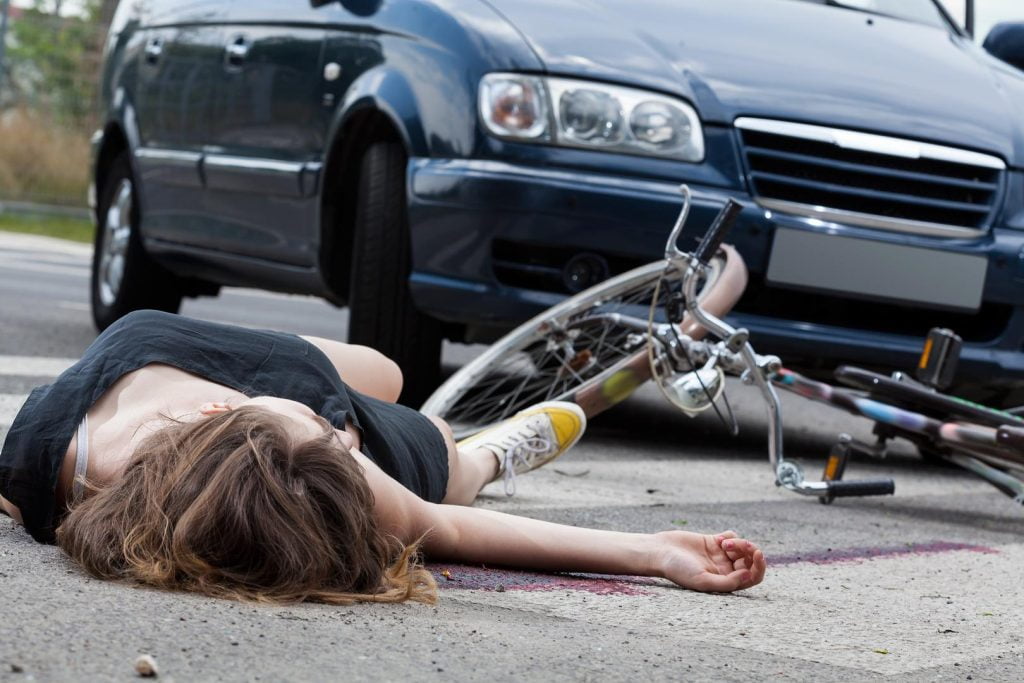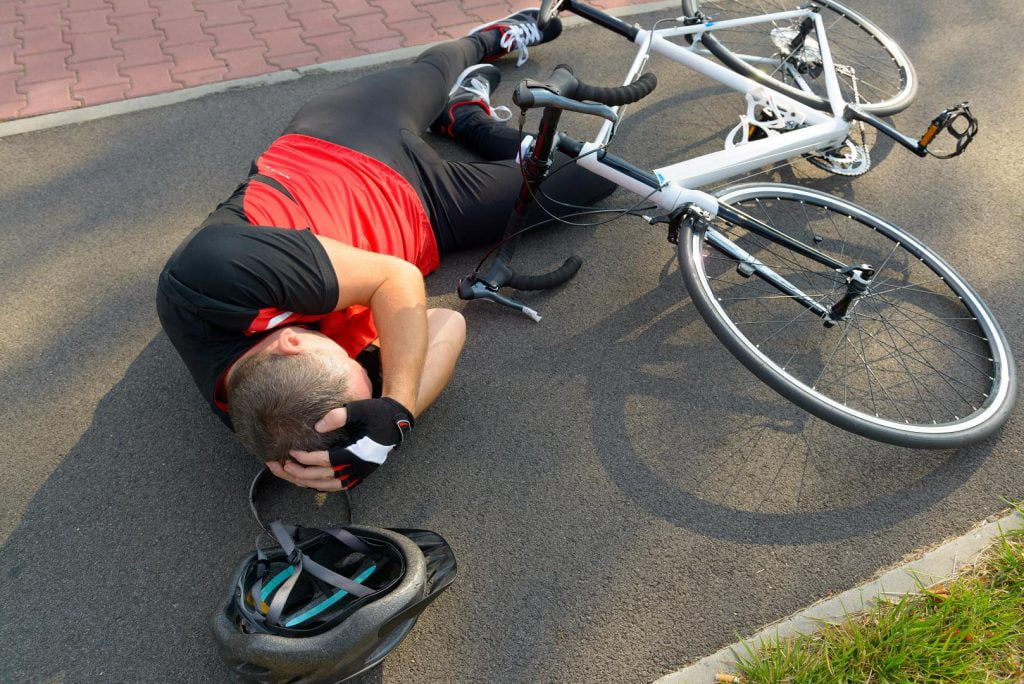Charlotte Bicycle Accident Lawyer
Charlotte Bicycle Accident Attorney

Whether they are riding for pleasure or commuting to work, bicyclists are constantly vulnerable to other motorists who fail to give them the respect they deserve, from neglecting to properly share the road to intentionally operating their vehicles in reckless manner while in proximity to a cyclist.
Bicyclist Accidents Differ From Car Accidents
Compared to occupants of a car, cyclists who are involved in an accident have little protection from the force of an impact after being struck by a car, and many sustain secondary injuries after being thrown from their bikes and striking the pavement or nearby objects. This intense blunt force can cause broken bones, concussions, traumatic brain injuries, spinal damage, disfiguring soft tissue injuries, and lasting psychological trauma.

Whether you are a bicyclist or a motor vehicle driver, it is vital to understand North Carolina’s bicycle laws for your safety and the safety of those around you. Research shows that the roads only continue to become more dangerous over time, so you should also be aware of the common causes of bicycle accidents and know exactly what to do if you experience an accident. Read on for more information about bicycle accidents, then contact Ayers, Whitlow & Dressler immediately if you are injured in such an accident.
Bicycle Accident vs. Bicycle Crash – Why Semantics Matter
Charlotte bicycle accident attorneys have long argued that referring to bicycle collisions as “accidents” is incorrect, as many clients are not injured accidentally. Instead, in an overwhelming majority of cases, cyclists are injured because of drivers who fail to adhere to a reasonable duty of care while traveling on the state’s roadways. However, “bicycle accident” is the term most often used by the public, and we want to ensure our services are visible to injured cyclists who may be searching online for legal representation. Although we believe semantics do make a difference and that this distinction is important for changing misconceptions about bicycle crashes, we will use the terms “accident” and “crash” interchangeably throughout the following information.
North Carolina Bicycle Laws
North Carolina law defines a bicycle as a vehicle, which means cyclists have many of the same rights and responsibilities as motor vehicle drivers. Cyclists are expected to demonstrate reasonable care when traveling, but it is not always possible for them to take the same actions expected of motor vehicle drivers. For example, in some cases, it may be safer or more efficient to ride on a sidewalk or shoulder than riding on the roadway or using the bike lane. In these situations, cyclists must remain as visible as possible, keep a careful lookout, and use signals or other forms of communication to alert drivers of their upcoming actions.
The most important North Carolina bicycle laws focus on the following categories:
- Bicycling While Intoxicated
Anyone who drives a vehicle of any kind on a highway, street, or public vehicular area within North Carolina is prohibited from operating their vehicle while under the influence of an impairing substance. Traveling is also prohibited after consuming enough alcohol to reach a BAC of 0.08% or more or with any amount of a Schedule I controlled substance in their system.
- Equipment Requirements
When riding after dark, you must have a white light on the front of your bike and a red light or reflector on the back to ensure motorists can see your movements. Under normal atmospheric conditions, the front light must illuminate a minimum of 300 feet in front of the bike, and the backlight or reflector must illuminate a minimum of 200 feet behind the bike.
North Carolina mandates that anyone under 16 must wear a helmet. Helmets do not protect cyclists from all injuries, but they can significantly minimize the extent of any injuries sustained in a crash.
- Where to Ride
North Carolina does not require cyclists to travel within bike lanes, and it is possible to ride on the sidewalk in some cities. The law prohibits cyclists from riding on fully controlled-access highways, meaning the DOT has controlled all access points on the highway, and there are no driveways or at-grade crossings or intersections by other roads. However, in some cases, access points are limited rather than fully controlled, and driveways or side streets may provide the only method for accessing properties. Cyclists must occasionally use those roads.
- How to Ride
As a cyclist, you are expected to follow these rules:
- Travel at a reasonable and prudent speed for the conditions
- Decrease your speed when necessary to avoid injuring others or property
- Ride only on the right-hand side of the road with oncoming traffic, unless:
- You are overtaking and passing another vehicle,
- An obstruction in the road requires you to ride on the left,
- A highway has three marked lanes, or
- A road is designated for one-way traffic
- Obey all road signs, signals, and lights
- Make a complete stop at red lights and stop signs
- Stop, look, and yield before entering major roadways
- Yield before changing lanes
- Stay as close to the right as possible when turning right, but do not swerve between parked cars or on and off shoulders to do so
- Stay in the rightmost section of the lane when turning left
- Use hand or arm signals to alert drivers that you will be turning or stopping
- Maintain at least five feet of distance from parked cars, even if that means you must take up an entire lane
- Never ride while under the influence of alcohol, drugs, or other substances
- Do not ride in any way that causes a hazard for motorists or pedestrians
- Turning and Merging at Intersections
Although your right to occupy a lane still applies at intersections, you are more likely to be involved in a crash at an intersection than in any other situation, so always take care when turning or merging. When you approach an intersection, use the rightmost lane that takes you to your destination. Stay on the right side of the lane to allow faster drivers to pass you on your left and stay on the left side of the lane to allow right-turning drivers to pass you on your right.
- Passing Distance
North Carolina requires a two-foot passing distance. However, two feet is rarely sufficient for maintaining your balance and avoiding hazards such as wind blasts, splashing water, and flying debris. In situations where a motorist cannot pass you safely with only two feet of clearance, they are expected to use due caution and circumspection when passing to avoid causing injury. This includes limiting speed and providing more clearance when necessary. You may only pass motorists on the right if traffic has come to a stop in one lane, but the right lane is moving.
Common Causes of Bicycle Accidents
Bicycle accidents can be caused by riders or motorists. The most common causes of bicycle crashes resulting from rider error include:
- Distracted bicycling
- Riding too fast for road conditions, weather, or vehicle traffic speed
- Riding too close to traffic
- Failing to properly follow the rules of the road when merging, changing lanes, or approaching an intersection
- Riding on sidewalks, parking lots, or driveways where a car could unexpectedly back up and hit you
Cyclists are at risk of sustaining injuries from being cut off, hit with a door, struck by a vehicle, or forced off the road. The most common causes of bicycle crashes resulting from other drivers include:
- Driving while distracted, fatigued, or otherwise impaired
- Failure to leave sufficient clearance for cyclists
- Exceeding the speed limit
- Weaving through traffic
- Drifting outside of a lane or onto a shoulder
- Making unsafe lane changes
- Overtaking cyclists
- Turning at a green light without looking
- Running red lights and stop signs
- Failure to yield for cyclists
What Should I Do After a Bicycle Accident in Charlotte, NC?
If you are a cyclist injured in a collision with a motor vehicle, the actions you take afterward can have positive or negative effects on a potential personal injury claim. Follow these steps:
- Call 911 to report the crash to law enforcement.
- Obtain information from the driver, including name, address, phone number, email address, driver’s license number, license plate number, and insurance information.
- Obtain information from any witnesses who perceived part of the crash or any events before or after the crash, including name and contact information.
- Take notes on the conditions at the accident scene, such as weather, road conditions, traffic signs or signals, traffic patterns, or any other factor that could come into play during a personal injury claim. If possible, take photos or video footage as well.
- Seek medical attention, even if you do not notice any injuries. The full extent of injuries in a bicycle crash are not always obvious and can manifest later, especially in instances of head trauma. Without documentation by a medical provider, it becomes extremely difficult to prove that the crash was the cause of your injuries.
- Contact a Charlotte bicycle accident lawyer right away.
Do I Need a Lawyer for a Bicycle Accident in Charlotte?
Securing legal representation immediately is the only way to ensure you are fully prepared to make a valid personal injury claim. In many other states, injured cyclists can still recover compensation even if their actions played a role in the crash. North Carolina follows a contributory negligence standard, which means that if you shared any fault for contributing to the crash, you may be prevented from recovering compensation from the driver’s insurance to pay for your damages. Even being 1% at fault significantly undermines your claim and your chances of securing adequate compensation.
A Charlotte bicycle accident lawyer has in-depth knowledge of state laws so they can help you identify the unsafe or negligent actions of the driver and argue that any actions you took before the crash were legal according to the rules of the road. An attorney who specializes in bicycle crashes knows what factors to focus on in your case and can help you prepare your claim, including gathering and organizing evidence from police reports, medical records, accident scene photos, and witness testimony.
A bicycle accident attorney in Charlotte, NC also understands the tactics that a driver’s insurance company may use to shift the blame, minimize your damages, or deny your claim and can advocate on your behalf in negotiations with this company to secure a settlement. If the insurance company refuses to offer a fair settlement, they can take your case to court and serve as a powerful advocate for your rights and your interests.
You Need Expert Legal Representation
Because North Carolina’s personal injury laws are complex and particularly strict in comparison with other states, it is vital that you understand your responsibilities as a cyclist – not only to keep yourself safe but to file a successful personal injury claim to cover your damages. At Ayers, Whitlow & Dressler, our team of Charlotte bicycle accident attorneys have decades of combined experience representing cyclists who have been injured by careless or negligent drivers.
If you were injured in a bicycle crash,contact Ayers, Whitlow & Dressler today to schedule a consultation. Our firm has a long record of successful results, and we are dedicated to helping you recover financial support during this challenging time. When you work with us, you can focus on healing while we take care of filing your personal injury claim and battling with insurance companies. We can protect your rights, aggressively advocate for you in court, and help you secure the compensation you deserve to move forward. Speak with our team today to learn more.


